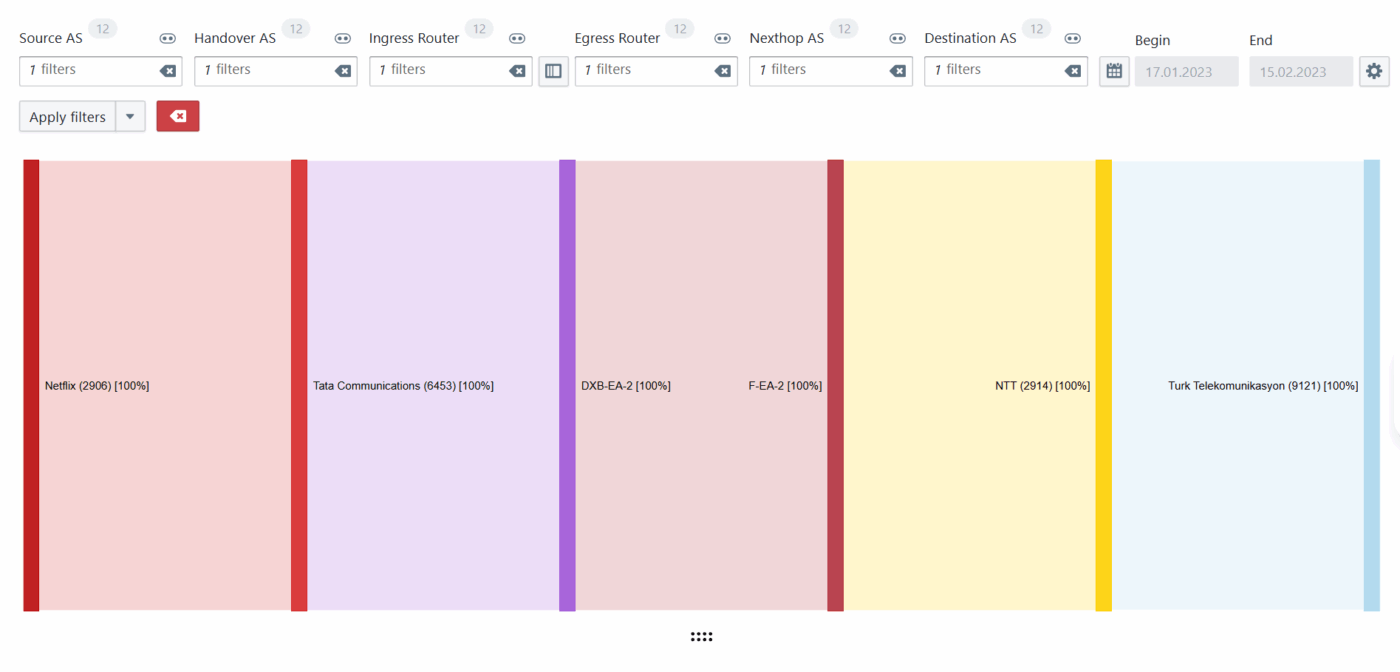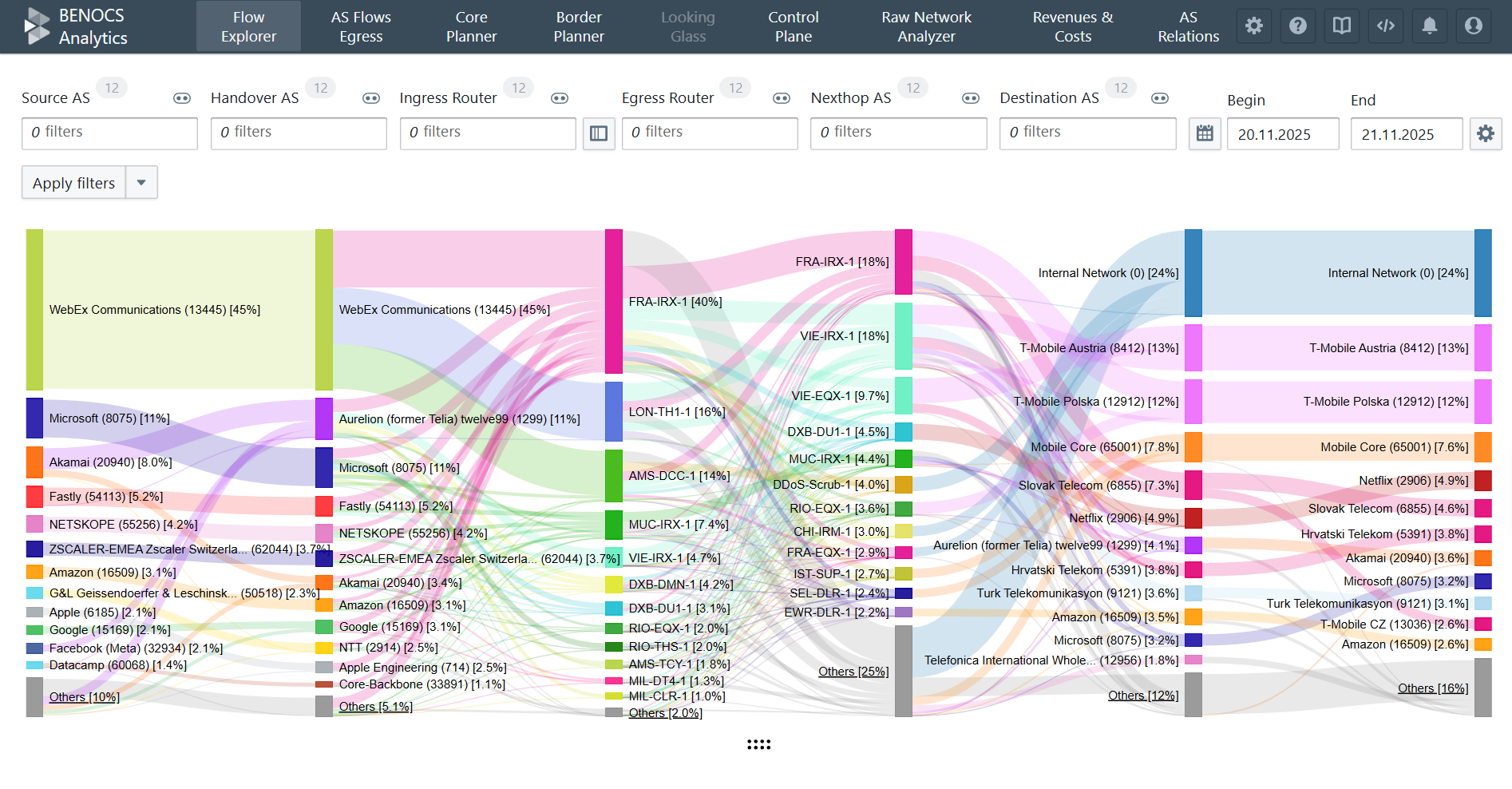Why it matters
The networks of ISPs change frequently: new peers are added, fresh POPs are built, migration to new hardware is undertaken, and more. Ever changing networks sometimes brings changes to the teams too like NOC shifts, peering, security and capacity planning. A network observability tool is integral to network operations to monitor and make sure traffic is flowing uninterrupted, irrespective of the changes. If the pricing of the solution changes per flow, per router, per peer or per user, then it turns normal engineering work into budget surprises and access bottlenecks.
That is why we at BENOCS adopted an alternative approach to pricing: one service fee aligned to your committed peak traffic levels, a nominal traffic fee only when traffic levels grow beyond that commitment, and, last but not least, unlimited user licenses for your organization. Another added bonus: your favourite sampling rate does not affect the price.
Cool, huh?
How do we determine pricing?
We provide customized pricing for each network and the pricing is determined by the complexity of your network. We collect the following network KPIs to evaluate network complexity.
- Peak throughput traffic on the network: The peak traffic that traverses your network. Any bit counts only once; no double-counting for ingress and egress
- Number of full BGP table routers that export flow: usually the internet-facing border or edge routers
- Total number of routers: Including all your access- and aggregation routers
- Number of BGP peers: includes all the upstreams, downstreams, peers, caches, CDNs, and IXPs (we consider private peers separately, while an IXP will be counted as one peer) connected to your network.
Now you might wonder: how does this help us calculate network complexity? Each KPI above constitutes a dimension in our post-processed data and allow us to calculate the number of unique flows in your network. We measure traffic on the incoming side of the ingress interface on your full-table BGP router. This router could either be an edge router facing the internet or a customer-facing router. These routers are displayed in the Ingress Router dimension in the Sankey diagram of our Flow Explorer.
BGP provides us with the complete AS path of the traffic and that AS path also includes the IP address of the router from which traffic egresses (even if they don’t export flow). These routers are the total number of routers in the network and are displayed in the Egress Router dimension of the Sankey.
On either side of Ingress and Egress Router dimensions, we display both Handover and Nexthop ASes which comprise BGP-peers (usually Transit, PNIs, Peerings, CDNs and caches) and downstream networks.
When you combine these dimensions with Source ASes sending traffic to your network and Destination ASes, where traffic terminates after leaving your network, the 6-dimensional Sankey is complete.
Now the goal is to find number of unique flows and it can be best explained with an example. Using filters across different dimensions, you are able to see below a path of Netflix traffic entering via Tata as Handover and terminating into Turk Telekom via NTT.
Similarly, we are able to calculate the total number of unique flows in each network and add that to the peak traffic levels to determine complexity. Once the complexity is determined, a service fee is now provided for a peak traffic commit. Traffic fee appears on the invoice only if sustained peaks exceed the traffic commitment, because higher sustained peaks generate more flow records to ingest, enrich and store, that means: more data to process and analyze. This fee simply covers that incremental processing load when utilization genuinely grows.
Why this suits ISPs’ economics (and operations)
- No growth tax on topology: You can add any number of new peers or redundant routers, but the pricing doesn’t jump if utilization doesn’t.
- No gatekeeping on access: Unlimited licenses mean NOC, engineering, peering, security and management executives can all see single source of information. Billing follows utilization, not headcount.
- Predictable budgets: The primary variable to plan is your network’s traffic. Only sustained growth triggers a small, clear traffic fee.
What you will and won’t see on a BENOCS invoice
- Service fee: aligned to the peak traffic you commit to
- Traffic fee (only if applicable): nominal, contract-defined, when sustained traffic peaks grow beyond the commitment.
- Absent by design: per-router, per-peer, per-user license add-ons.
Here's an example:
You commit to 1.4 Tbps of peak traffic at the start of the contract and add two new routers in two different PoPs for resilience. If peaks stay at 1.4 Tbps, your invoice doesn’t change. If peaks sustainably move to 1.55 Tbps, you will see a small transparent traffic fee. We will recommend lifting the commitment at renewal if that level persists.
Do you want an estimate of our Analytics solution for your network?
Reach out to us at sales@benocs.com for a customized quote.


